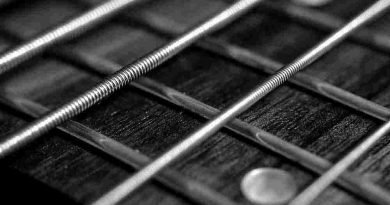Non-Traditional Machining Process
Non-traditional machining, also known as the modern machining or unconventional machining is a method of removing material from a workpiece using advanced techniques that does not involves any direct or physical contact between the tool and the workpiece. The non-traditional machining processes offers highly precise and specialized way of machining where traditional machining processes such as turning, drilling or milling are not suitable due to material hardness, complex shapes or toughness.
In non-traditional machining process, the tool removes the excess amount of material from a workpiece without comes in a contact and wear and tear associated with traditional cutting tools. This makes non-traditional machining processes to able to machining on complex shapes of any size and material as compared to traditional machining processes.
What is Non-Traditional Machining Process?
Non-traditional machining is the processes in which removing the excess material from a workpiece without the direct or indirect contact and wear and tear with workpiece and cutting tool as compared to traditional machining process.
Non-traditional machining process uses electricity, heat energy, light energy, chemical energy, electrochemical energy, sound energy, and mechanical energy to remove the materials from workpiece.
Types of Non-Traditional Machining Process:
Non-Traditional Machining Processes are classified based on the different types of energy used to remove material from the workpiece.
The non-traditional machining processes uses different types of energy such as mechanical, thermal, chemical, and electrical energy to achieve an accuracy, and precision. Here are the various types of Non-Traditional Machining Processes,
Electrical Discharge Machining (EDM):
Electrical discharge machining is also called as spark erosion or metal sparking machining it is a non-traditional machining process which can be based on erosion.
Electrical discharge machining works on the principle of metal removal by the combination of electrical and thermal energy. The electrical energy is utilized to create electric spark and heat is produced by erosion of metal. In electro discharge machining, there is no physical contact between tool and workpiece. It is a non-traditional machining process. In this, the tool electrode is connected to the -ve terminal of the DC power supply and workpiece is connected to the +ve terminal of the DC power supply.
Electrical Discharge Machining is used for manufacturing of tool having complicated profile and for machining of forging, blanking, extrusion, etc.
Read More about Electrical Discharge Machining (EDM)
Laser Beam Machining (LBM):
Laser is an electromagnetic radiation which produces monochromatic light in the form of beam. A laser beam machining is a non-traditional machining process in which the machining is operated with the help of laser light. The laser light has maximum temperature strikes on the workpiece to melt due to high speed. This process uses thermal energy to remove metallic or nonmetallic surfaces.
Laser Beam Machining works on the principle of conversion of electrical energy of flash lamp into heat energy to emit the laser beam by pumping the energy. Laser Beam Machining can be used for engraving of materials and also can be used for drilling of micro holes. Laser Beam Machining is the process has the ability to engrave and it can be drilled of micro holes.
Read More about Laser Beam Machining (LBM)
Ultrasonic Machining (USM):
Ultrasonic machining is one of the non-traditional machining processes. This is one of the types of machining process which uses less heat in the process. Ultrasonic machining process is an abrasive process which can create any material into hard and brittle form with the help of its vibrating tool.
Ultrasonic machining process works on the principle that removes material from the surface of a part through high frequency, vibrations of tool against the material surface in the presence of abrasive particles.
Read More about Ultrasonic Machining (USM)
Wire-Cut Electrical Discharge Machining (WEDM):
Wire-Cut Electrical Discharge Machining (WEDM) is an electro thermal production process in which a thin metallic wire along with the de-ionized water allows the wire to cut through metal by the use of heat from electrical sparks.
The wire is connected to the negative terminal and workpiece is connected to the positive terminal of the DC power supply same as the working of electro discharge machining. The dielectric is calculated to the storage of tank at high pressure pump. The spark can be generated due to current flowing from a wire and the process is done.
Read More about Wire-Cut Electrical Discharge Machining (WEDM)
Water Jet Machining (WJM):
Water Jet Machining (WJM) is an advanced, non-traditional machining process in which a water jet at very high pressure is used to cut materials to make a 3D part. It is also known as Water Jet Cutting. It can be used to cut softer materials such as plastics, rubber or wood and to cut harder materials such as metals and granite, an abrasive material is mixed with water with very high velocity pressure.
Water Jet Machining based on the principle of water erosion. When a high velocity jet with high pressure strikes on the surface of material, the removal of material takes place. Water Jet Machining is used in various industries like mining, automotive and aerospace.
Read More about Water Jet Machining (WJM)
Non-traditional machining is a modern machining and unconventional machining is a method of removing material from a workpiece using advanced techniques. Electro Discharge Machining, Laser Beam Machining, Ultrasonic Machining, Water Jet Machining, Abrasive Water Jet Machining and Wire Cut Electrical Discharge Machining are used for various applications to achieve accuracy and precision.





